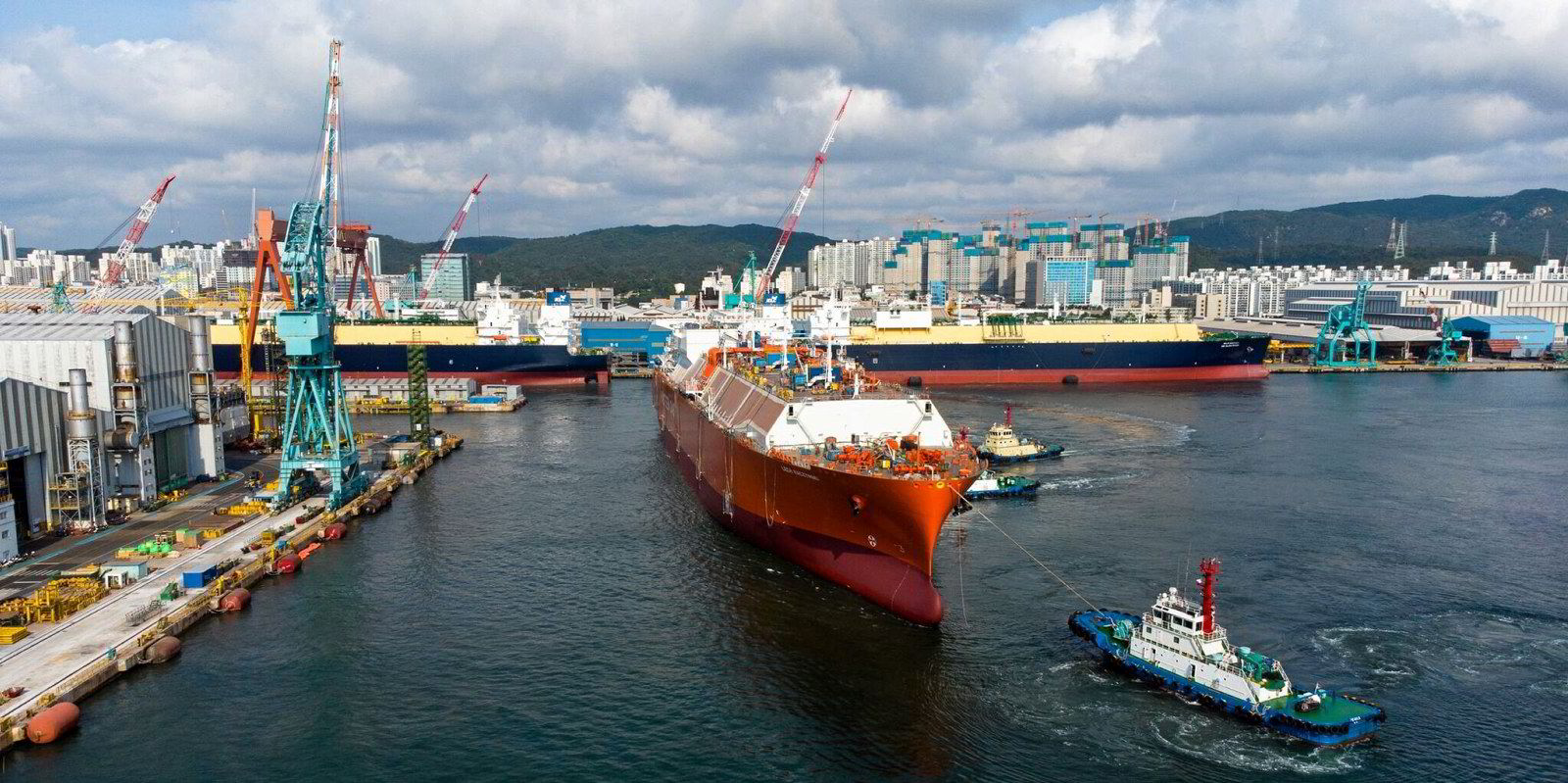A quartet of offshore technology provider Moss Maritime, class society DNV, shipbroker Fearnleys and power specialist Siemens Energy have teamed up on a new design of larger capacity LNG carrier designed to slash CO2 emissions, reduce unit freight cost and virtually eradicate methane slip.
The partners, who are due to hold a signing ceremony at the huge Gastech meeting in Milan on Monday, said their Ocean Green design will use a hybrid combined-cycle power and propulsion plant. This will use the BlueVault energy storage solution that combines a gas turbine and a steam turbine to power the vessel.
The vessel has been designed with a compact engine room layout. The team said this will allow for an increased cargo capacity, simplified vessel design, less maintenance and “potentially less staffing”.
DNV studies have shown that the Ocean Green system will result in an equivalent CO2 reduction of approximately 11% to 18%, the partners said, depending on the final specification selection.
It will also reduce the unit freight cost by between 9% to 17% compared to today’s LNG carriers and their current market operational profiles.
“The Ocean Green system will meet current regulations and is expected to mitigate the need for any major midlife upgrades,” they added.
Fearnley LNG team leader Per-Christian Fett told TradeWinds that for over 18 months the team had been quietly working on the new design. He said the aim was to come up with a vessel that offers reduced emissions, freight costs and operational risks.
- BlueVault energy storage has been in operation in more than 60 marine vessels
- it enables operators to reduce the runtime of combustion engines and keep generators operating at a level maximising efficiency
- it uses an SGT-400 in combination with the heat recovery steam generator, steam turbine generator, BlueVault energy storage solution, propulsion and automation system form the backbone of the hybrid combined-cycle power and propulsion plant
- its designers claim it burns fuel efficiently with exceptionally low NOx levels and practically no methane slip and particulate matter and the reduced heating demand and re-use of the hot feedwater further reduces the aux boiler fuel consumption and improves the ship’s performance.
The Fearnley LNG supremo said DNV had undertaken a great deal of simulation work and the partners now have a specification for the vessel.
Fett flagged up the vessel’s bow-mounted accommodation block — a design feature he said had been looked at before including in the late 1990s by Kvaerner Masa-Yards. He said this leaves space to make a more optimal layout in the engine room.
He said the cargo capacity could be expanded up to 200,000-cbm.
Crew numbers could potentially be reduced from the normal 24 to 26 for an LNG carrier to nearer four, he said, referencing the work DNV has been doing on ship automation.
Fett said the LNG carrier’s design means that it is also “hydrogen ready”.
Partner Moss Maritime is arguably best known for its design of spherical, sloshing-proof cargo tanks which were at one time popular for LNG carrier newbuildings. But the industry has since switched to membrane-type tank systems.
But Fett said the Norwegian company is now agnostic on tank design choices.
Fett said the next step will be to start speaking to potential customers and shipbuilders about the design.
He said initial newbuildings are likely to prove slightly more expensive to build than those designs available today. But he added that the benefits will likely outweigh this.
Fett said that with the yard’s LNG berths largely full for 2026 delivery positions, the earliest an Ocean Energy vessel would likely be on the water would be in 2027 or 2028.
He sees the new design being targeted at the next wave of new liquefaction projects which will be targeting 2026 to 2028 start-up dates.







